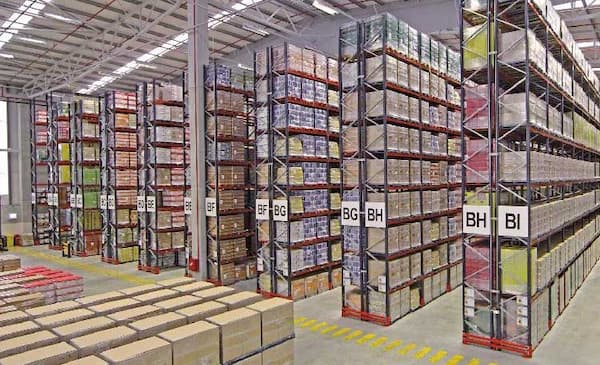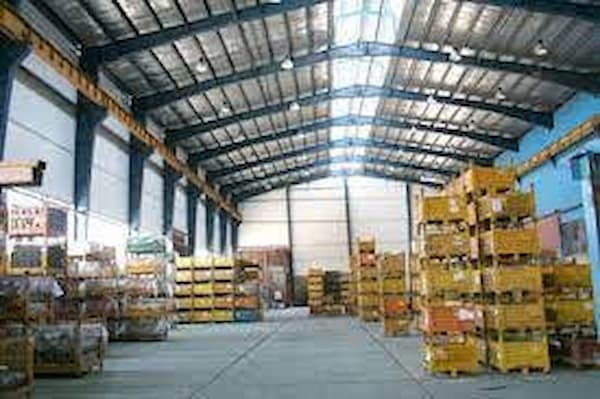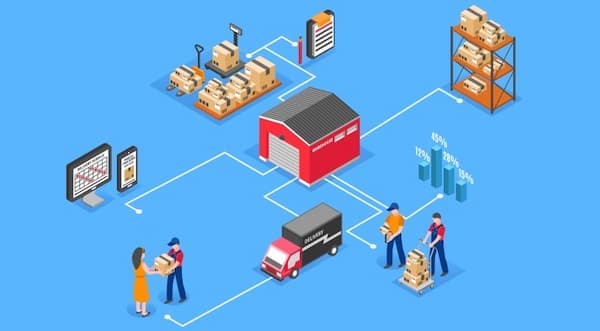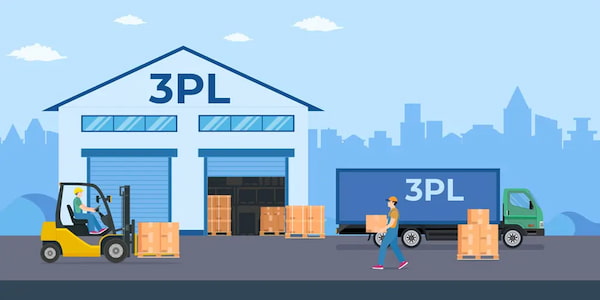In relation to Exploring 10 warehouse types, we must first say that the storage and storage of goods has been one of the most problematic issues for mankind from the past to the present day. Today, thanks to the advancement of technology and the use of new technologies, the diversity in product storage warehouses has also increased.
The method of storing goods in the warehouse, the purpose of storing products, the type of products that are stored in the warehouse, the design of the warehouse building and the level of automation of the warehouse are all among the things that have fueled the diversity in warehouses. In this article, we are going to Exploring 10 warehouse types. To get to know the types of warehouses and better understand the role of warehouses in business, stay with us.
Exploring 10 types of warehouses, customs warehouses
Let’s start the topic of Exploring 10 warehouse types by saying that a customs warehouse is another type of warehouse, the purpose of its construction and foundation is to store export and import goods. In fact, customs operations are carried out in these warehouses. The maximum time of keeping goods in the customs warehouse is three months. Contact our experts to find out about the conditions for exporting food products
However, if the transport company or the owner of the goods requests more time, two months can be considered for him. In order for the goods not to be abandoned in this warehouse, the goods must be removed from the customs warehouse at the appointed time.
If the perishable goods are stored in the customs warehouse, the clearance process must be done as soon as the goods are unloaded. Deterioration of the goods in the customs warehouse means its abandonment.
It is very important that the work clearance takes care of the goods that are stored in the customs warehouse. This issue is more important in the case of perishable goods. Insuring the goods in the customs warehouse is one of the obligations.
When the goods can be accepted in the customs warehouse, for which the summary declaration of the export permit, clearance, return and domestic and foreign transit has been registered. The goods that are imported into the customs warehouse must be immediately registered in the warehouse office and for each customs license, the confiscation form, the written orders of the bill of lading and the warehouse bill must be presented separately.
Be careful that it is not easy to leave the customs warehouse. In case of illegal departure of the goods from the customs warehouse, smuggling is declared.
Among the advantages of the customs warehouse, we can mention export without paying duties if there is no demand for imported goods, saving money, diversity in stored goods, and ease of transportation.
Customs warehouse is actually a type of guaranteed warehouse where the warehouse owner is obligated to pay taxes. In this warehouse, you can store goods without paying taxes and customs duties, so that the owner of the goods does not face financial loss at the time of supply.
Companies that store their goods in these warehouses do not have to pay any fees until clearance and can store goods in these collections without restrictions. This warehouse has a very safe and secure environment and is considered an excellent choice for e-commerce businesses in the future.
State warehouse
In the discussion of Exploring 10 warehouse types, the government warehouse, as its name suggests, is designed specifically for the storage of government goods. However, related industries and private sector factories can also use these warehouses in general. The rent of these warehouses is directly deposited into the government account and it is very important that the rent payment deadline is not delayed.
If the rent of the government warehouse is late, the government will sell part of the products stored in the warehouse and take the cost of the rent. Government warehouses are usually used to store public goods, for example, goods that organizations store for critical times such as earthquakes, floods, and storms.
Mosques, universities, schools and companies and offices also use government warehouses because they have low rental rates. Therefore, you can save money by using government warehouse services. Contact our experts to learn about food exports to Europe
Exploring 10 warehouse types, broadcast warehouses
The distribution warehouse is another type of warehouse that we will discuss in the topic of Exploring 10 warehouse types that are designed and built for the movement of goods between transport companies. The storage time of goods in these warehouses is very short. In fact, goods are sorted in distribution warehouse instead of storage.
In these warehouses, the cost of transportation is much lower, the cost of storage is lower, the delivery of goods is faster, and the risk of product damage is minimized because the goods are moved at a high speed in the supply chain and reach the main buyers in a short time. will receive.
Collective warehouse
In the topic of Exploring 10 warehouse types, we must say that a collective warehouse is a type of warehouse where different goods from different suppliers are stored for ease of transportation and export. Traders who want to buy products from several sellers and manufacturers can store goods by choosing these warehouses.
While all the collected goods are finally directed to the destination by a transportation system. Using collective warehouse services reduces transportation costs and reduces export costs. Contact our experts to find out about the export conditions of supermarket products
Constant temperature warehouse
Some goods must be kept at a constant temperature, otherwise they will spoil. In Exploring 10 warehouse types, we say that a constant temperature storage is a type of storage whose temperature is constant at all times. Using constant temperature warehouse services helps to maintain the quality of products that are sensitive to temperature changes.
Reverse logistics warehouse
Many goods may be defective. Storing defective goods in the warehouse and sending them to the end customer can cause his dissatisfaction. For this reason, a warehouse called a reverse logistics warehouse is used. In this warehouse, defective goods are stored to be returned to the point of origin.
In Exploring 10 warehouse types, it should be said: if the product needs to be repackaged, new packaging is considered for it. Many times it is necessary to repair or destroy the product. Using reverse logistics warehouse services will increase customer satisfaction and help the recycling cycle.
Mechanized and automatic warehouse
In Exploring 10 warehouse types, we will focus on the mechanized warehouse, this type of warehouse is a type of warehouse that has a high level of automation. Most of the things in these warehouses are done intelligently and by new technologies. The use of robots and artificial intelligence is common in these warehouses. Contact our experts to find out about exporting food to Australia
Many manual operations in this warehouse are mechanized and performed by machines. Among the advantages of using a mechanized warehouse with a high level of automation, we can mention reducing manpower costs, providing a safe environment for employees, reducing the rate of accidents and reducing costs, and speeding up order processing.
Exploring 10 warehouse types, cooperative warehouse
A cooperative warehouse is a warehouse that belongs to farmers and gardeners. Cooperative members are allowed to store their goods in these warehouses and bear less rent. This was another case of Exploring 10 warehouse types.
Sorting warehouse
In the topic of Exploring 10 warehouse types, it should be said that the graded warehouse, which is also called the sorting warehouse, is a type of warehouse where goods from all over the country are stored, which are separated and sorted according to type and destination.
These warehouses are equipped with the latest technologies and can achieve better productivity and results in less time. One of the most important advantages of using a sorting warehouse is the need for less investment, high processing speed, high accuracy of devices and coverage of a wide variety of goods.
Dangerous cargo warehouse
And the tenth item from Exploring 10 warehouse types is the warehouse of dangerous goods, which has high standards for storing dangerous materials. The personnel who work in these warehouses have the necessary licenses and have received professional training.
The use of personal protective equipment and how to deal with risks are among the important things that the personnel in these centers are well aware of. The storage of hazardous materials is usually built far away from urban areas. These warehouses reduce the risk of storing dangerous cargo.
Every industry needs a warehouse, so we Exploring 10 warehouse types. The type of warehouse depends on the type of industry, the type of goods, the amount of demand, the storage conditions of the goods, the value of the goods and the storage time. In fact, many parameters are involved in the type of warehouse.
Many times, things such as the distance or proximity of the warehouse to the railway and air routes, the available space for building the warehouse, the facilities in the area, the type of service delivery processes and transportation methods and legal points can also be involved in choosing the type of warehouse.
If we want to name some of the most important types of warehouses in Exploring 10 warehouse types, we should mention government warehouses, customs warehouses, collective warehouses, smart warehouses, mechanized warehouses, and distribution warehouses. Customs warehouses and collective warehouses are among those warehouses that play an important and effective role in the process of trade and commerce.






